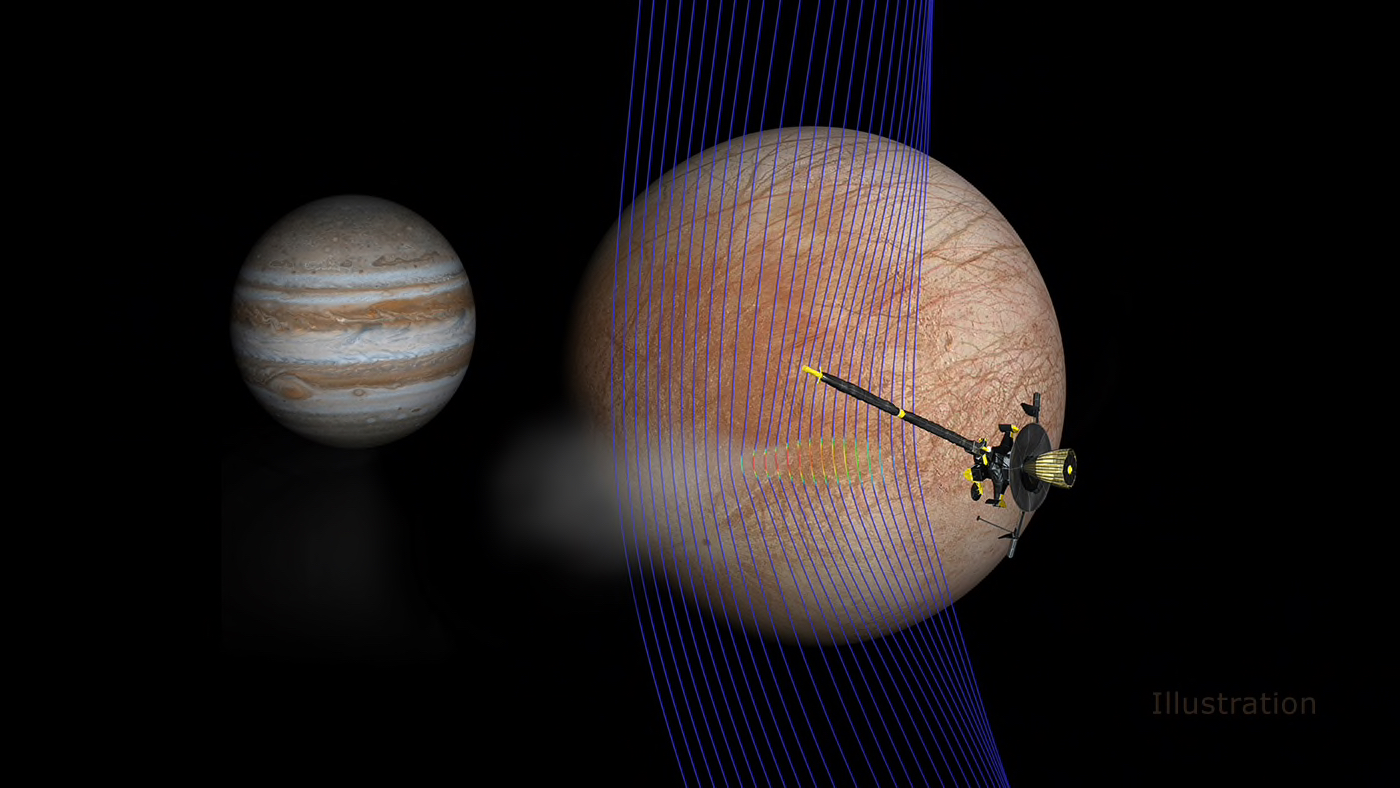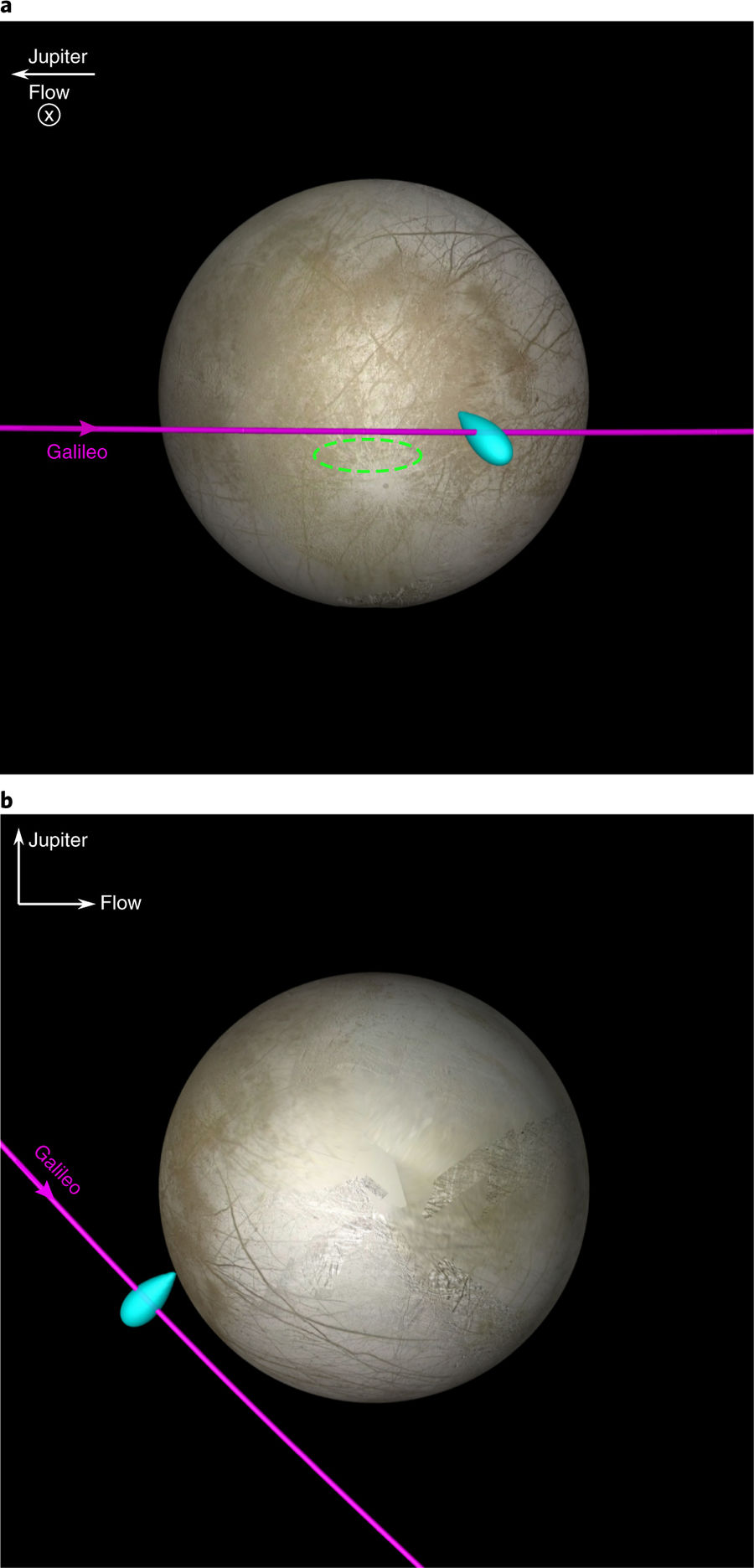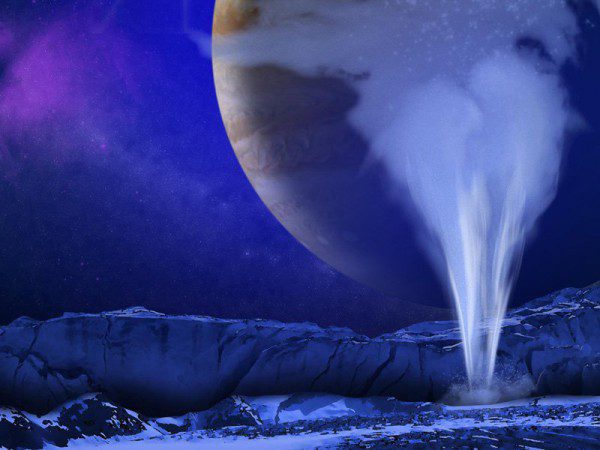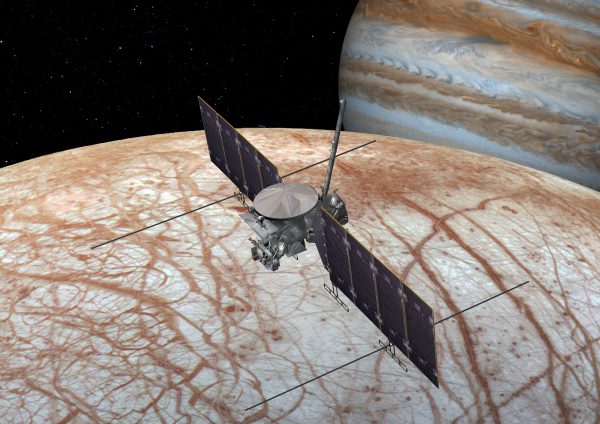
For decades, Jupiter’s moon Europa has fascinated scientists and the public alike after it was learned that a global water ocean lies beneath the icy crust. Could there be life on this small world? Now, new results from old data, presented today in a NASA live science chat, are hinting that the subsurface environment on Europa might indeed be quite habitable, as other studies have also suggested. Previous observations indicated that there were plumes of water vapor erupting from below the surface into space, similar to ones on Saturn’s moon Enceladus. Confirmation was difficult, but a new study shows that the old Galileo probe to Jupiter in the late 1990s not only detected a plume, but actually flew through it, although that was unknown at the time.
The new data provides independent evidence for the Europan plumes; this is exciting because the process is likely similar to that on Enceladus, where water from the ocean below makes its way to the surface through fissures, where it can vent into space. The plumes on Europa may also originate from lakes closer to the surface than the ocean, some scientists theorize.
The findings were buried in old Galileo data, waiting to be found; the data was put through new and advanced computer models to help solve a mystery – a brief, localized bend in the moon’s magnetic field – that still had not been explained. The new paper has been published in today’s issue of the journal Nature Astronomy.
“The data were there, but we needed sophisticated modeling to make sense of the observation,” said Xianzhe Jia, a space physicist at the University of Michigan in Ann Arbor and lead author of the new paper.
Melissa McGrath of the SETI Institute in Mountain View, California had presented some findings from the Hubble Space Telescope’s observations of possible plumes on Europa, and one of the locations stuck out to Jia.
“One of the locations she mentioned rang a bell. Galileo actually did a flyby of that location, and it was the closest one we ever had. We realized we had to go back,” Jia said. “We needed to see whether there was anything in the data that could tell us whether or not there was a plume.”


As it turned out, high-resolution magnetometer data from Galileo showed an unexplained brief, localized bend in the magnetic field. From the results, the researchers found that a water vapor plume best explained the anomaly – material in the plume becomes ionized and leaves a characteristic signature in the magnetic field.
“There now seem to be too many lines of evidence to dismiss plumes at Europa,” said Robert Pappalardo, Europa Clipper project scientist at NASA’s Jet Propulsion Laboratory in Pasadena, California. “This result makes the plumes seem to be much more real and, for me, is a tipping point. These are no longer uncertain blips on a faraway image.”
As mentioned in the live science chat, it is estimated that the plume was about 621 miles (1,000 kilometers) across. The Europan plumes are more diffuse than those at Enceladus, so harder to detect even if that large.

Just like with Enceladus, this is good news for future missions which will look for evidence of possible life. The plumes themselves can be directly sampled and analyzed, as Cassini already did several times at Enceladus. The upcoming Europa Clipper mission will be able to do just that, but with updated instruments. Europa Clipper is currently scheduled to launch in 2022 and will make at least 44 close flybys of the moon to study its surface, subsurface and habitable conditions of the ocean (as well as the plumes now).
“If plumes exist, and we can directly sample what’s coming from the interior of Europa, then we can more easily get at whether Europa has the ingredients for life,” Pappalardo said. “That’s what the mission is after. That’s the big picture.”
Thanks to this scientific treasure found in old data, scientists are now another step closer to knowing if this intriguing ocean world is home to any kind of life.
Follow AmericaSpace on Facebook!
SaveSave
SaveSave
Missions » Europa Mission »





ALL THESE WORLDS ARE YOURS – EXCEPT EUROPA.
ATTEMPT NO LANDINGS THERE.
I?m amazed, I have to admit. Seldom do I come across
a blog that?s equally educative and entertaining, and let me tell you, you’ve hit
the nail on the head. The problem is an issue that too few people are speaking intelligently
about. I’m very happy that I stumbled across this in my hunt for something regarding this.
What’s up to all, the contents existing at this web page are really remarkable for people experience,
well, keep up the good work fellows.